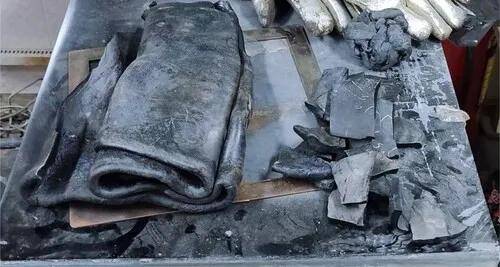博文
刊·见 | 工程学SCI期刊,汇集基于力学设计的创新研究
 精选
精选
||
在科技迅猛发展的今天,科研领域跨学科融合愈发普遍。结构力学与机械力学不再局限于传统的力学理论,而是与计算机科学、材料科学、数据科学等领域紧密结合在一起。当代工程系统,如高层建筑、大型桥梁、飞机、航天器等,变得越来越复杂。
本期刊·见为诸位介绍力学领域期刊Mechanics Based Design of Structures and Machines。除了对期刊进行详尽的介绍外,还将向您介绍刊内近三年高被引文章,以及近一年高阅读文章:
可变厚度柔性纳米板的振动和静态屈曲行为
通过创新的实验和计算方法探索不可压缩超弹性梁的屈曲和后屈曲行为
环氧树脂和环氧基纳米复合材料的非线性行为:综合实验与计算分析
 Print ISSN:1539-7734 Online ISSN:1539-7742
Print ISSN:1539-7734 Online ISSN:1539-7742
Mechanics Based Design of Structures and Machines期刊主要发表与机械、土木、航空航天、汽车工程以及船舶设计等领域应用相关的研究。该期刊包含了对研究工程师具有长期价值的分析、数值和实验研究成果。除了有关结构和机器分析与设计等主题,期刊还鼓励在新兴应用领域(如机器人技术、汽车、空间结构、智能结构和微机器等)中,探讨力学和基于力学设计基础性和跨学科贡献的投稿。
该期刊已被SCIE, Scopus, Ei Compendex数据库收录。
影响因子
根据JCR显示,Mechanics Based Design of Structures and Machines
最新影响因子为2.9
在力学领域排名 51/170
CiteScore
根据Scopus显示,Mechanics Based Design of Structures and Machines
最新CiteScore为8.8
数学
普通数学领域排名 6/399
工程
海洋工程领域排名8/105
航空航天工程领域排名12/153
汽车工程领域排名14/125
土木和结构工程领域排名41/379
材料力学领域排名51/398
机械工程领域排名70/672
物理学与天文学
凝聚态物理学领域排名 50/434
作者须知
接受文章类型
Mechanics Based Design of Structures and Machines接受文章类型:
Research Papers
Innovative Application Briefs
审稿周期
从提交稿件到获取初审意见,平均需要27天
稿件一旦接受后,在线出版平均需要14天
编辑团队
Mechanics Based Design of Structures and Machines期刊的主编由来自弗吉尼亚理工学院暨州立大学 (Virginia Polytechnic Institute and State University)机械工程系的Corina Sandu教授担任。副主编团队由来自英国、西班牙、德国等多地的研究人员组成。
主编介绍
Corina Sandu

Corina Sandu是弗吉尼亚理工学院暨州立大学(Virginia Polytechnic Institute and State University)机械工程系的教授。
研究范围包括:多体动力学系统建模与仿真、不确定性的处理、参数估计、多体动力学系统优化、公路和非公路车辆(轮式和履带式车辆)动力学、轮胎和履带的建模、地形力学(车辆-地形相互作用)、随机地形剖面和土壤特性建模、轨道动力学、轮轨接触和摩擦建模以及列车悬挂系统建模、机械系统的振动和控制。
作者分布
根据JCR显示,近三年在Mechanics Based Design of Structures and Machines发文的国家中,发文前三的国家/地区有:
中国
伊朗
印度
近三年,在Mechanics Based Design of Structures and Machines发文的全球高校和科研机构中,发文数量排名前三位的是:
印度理工学院系统(IIT SYSTEM)
美国国家技术学院(NIT SYSTEM)
埃及知识库(EKB)
近三年高被引文章
作者:Doan Hong Duc et al.
文章摘要:
The nanoplates have been used extensively in electronic devices, during the working process they can be affected by external forces. To enhance the working performance of mechanical systems, flexoelectric effects are usually added, therefore, it is necessary to study the mechanical behavior of these material structures under the effect of these effects. This is the first research to examine the vibration response and static buckling of variable flexoelectric nanoplates using the FEM and novel shear deformation theory type hyperbolic sine functions, where the thickness is adjusted by linear and nonlinear rules. This is a simple theory, which does not need any shear correction factors, while the mechanical responses of the structures are still described exactly. The numerical results of this work are compared with those of the analytical approach and other methods. Then, the influences of geometrical and material parameters on the free vibration and static bucking of the structure are explored. The data shows that the flexoelectric effect has a strong effect on the free vibration and static bucking behavior as well as the vibration mode shapes of the nanoplates. The working performance is increased when taking into account the effect of flexoelectricity. This work also shows that for each changing rule of plate thickness, the flexoelectric effect also significantly changes the mechanical response of the plate. This is an important suggestion in the design and use of plate structures in engineering practice.
近一年高阅读量文章
通过创新的实验和计算方法探索不可压缩超弹性梁的屈曲和后屈曲行为
作者:O. Azarniya et al.
 Figure 1. Raw rubber compound.
Figure 1. Raw rubber compound.
文章摘要:
The objective of this paper is to conduct a comprehensive investigation into the buckling and post-buckling behavior of hyperelastic beams through both computational and experimental means. Natural rubber is used in the construction of a beam with a square cross-section. To determine the mechanical properties of natural rubber, a uniaxial tensile test is performed in accordance with ASTM D412. In finite element modeling (FEM), the nonlinear behavior of rubber is modeled using hyperelastic theory and the Yeoh strain energy function. The Static-Riks method is also implemented using Abaqus for the analysis of nonlinear buckling. To validate the present investigation results with FEM, an experimental test of digital image correlation (DIC) is conducted. The critical buckling force obtained via numerical methods exhibits an error of nearly 5% when compared to the corresponding results obtained from experimental testing. In order to ascertain the impact of various design parameters on the buckling behavior of the system, a comprehensive parametric analysis has been conducted. The parameters studied include the cross-sectional thickness, length of the structure, eccentric loads, as well as the mechanical properties of the materials used in the system. Consistent with the FEM outcomes, the critical buckling force exhibited by the hyperelastic beam demonstrates a positive correlation with increasing levels of hardness, cross-sectional thickness, and eccentric loads. The buckling behavior of the system is adversely affected by increasing its length. To ultimately validate the precision and reliability of the model, a supervised neural network (NN) learning method is employed.
环氧树脂和环氧基纳米复合材料的非线性行为:综合实验与计算分析
作者:Mertol Tüfekci et al.

Figure 1. Representation of the particle geometries used as reinforcements (images are not to scale).
文章摘要:
The focus of this study is on the nonlinear mechanical properties of epoxy and epoxy-based nanocomposites, exploring frequency and strain amplitude dependency. Nanocomposite samples of epoxy are reinforced with fumed silica (FS), halloysite nanotubes (HNT) and Albipox 1000 rubber (Evonik) nanoparticles. Considering these particles have different geometries and stiffnesses, they are expected to have significantly different influences on the mechanics of the resulting composite. To enhance the reliability of the results and to reveal the impact of nanofillers on the mechanics of the material more distinctly, the manufacturing process is designed to be the same for all the specimens within the same material groups to eliminate the effects of the manufacturing process. The comprehensive characterization process consists of Fourier-Transform InfraRed Spectroscopy (FTIR), Scanning Electron Microscopy (SEM) and Dynamic Mechanical Analysis (DMA). The DMA tests are designed so that the material properties are measured depending on the vibration frequency and strain amplitude. Finally, the characterized nonlinear dynamic properties of these nanocomposites are used as the input material properties into a numerical model. In this simulation, a cantilever beam with representative nonlinear material properties, for these nanocomposites, is created, as example and its forced response is plotted under the same levels of excitation in the frequency domain. Key effects of the different nanofillers are identified using the resonance behavior, primarily focusing on the stiffness and damping of the epoxy-based nanocomposites. These experimental and numerical procedures followed show the significant impact of the nanoparticle reinforcements on the nonlinear nature of these epoxy-based composites.
https://blog.sciencenet.cn/blog-3574014-1446621.html
上一篇:中国传媒大学金海娜教授专访 | 揭开中国电影的国际之旅:领略翻译的力量
下一篇:图书出版小课堂 | 第六课:手稿是如何转变为成品书的?



